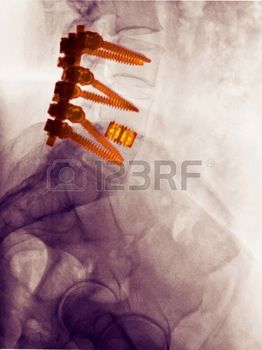Spinal stenosis, or narrowing of the spinal canal, is a common condition. It is usually associated with degenerative changes of the spine. Degenerative changes of the spine may result in bulging discs, enlarged ligaments and joints, and bony spurs that may cause compression or inflammation of the nerves leaving the lumbar spine to the legs. This results in pain in the low back and legs that typically increases with standing and walking.
The incidence of spinal stenosis is increasing as our population is getting older. Patients with spinal stenosis are frequently recommended to get it treated with surgery, surgery that might include fusion of the spine. Not only spinal fusion surgeries are performed in the United States at a rate that is much higher than anywhere else in the world, but that rate is actually increasing. Among Medicare beneficiaries, the rate of spinal fusions increased by an incredible 67% between 2001 and 2011. This type of surgery is extremely expensive, sometimes costing over $100,000, and can be associated with serious (sometimes catastrophic) complications. Fusion surgeries are also associated with further degeneration of the spine, as the segments above and below the fixed segment are subjected to additional bio-mechanic stress forces. A recent landmark study compared spinal fusion and non-operative treatment in patients with chronic low back pain: an average 11-year follow-up study found that patients with chronic low back pain and disc degeneration that elected to have spinal fusion surgery did no better than those who elected non-surgical care. The authors concluded that given the increased risks of surgery, the use of lumbar spine fusion in chronic low back pain patients should not be favored where other non-surgical treatments are available.
Now, a new study from Sweden, presented at the 2015 meeting of the International Society for the Study of The Spine (Forsth, et al) reinforced those findings by studying a group of patients with spinal stenosis. On this randomized controlled trial the authors compared outcomes for a group of patients with spinal stenosis who underwent spinal surgery with no fusion with another group of patients who underwent spinal fusion, and found no benefits from fusion for spinal stenosis. The authors did find one big difference between fusion vs no fusion: the patients having fusion had greater morbidity, longer operation time, longer hospital stay, and higher operation costs. The authors concluded that most patients seeking spinal stenosis surgery do not need spinal fusion.
So, why is spinal fusion still performed at high rates? And, why is this type of surgery considered a standard treatment for spinal stenosis? Hard to answer these questions, as the recent medical literature is making it much harder to justify the regular use of spinal fusions. It may have to do with the myth that abnormalities in MRI scans, like spinal stenosis, disc bulging, and spondylolisthesis correlate with patients’ symptoms; a myth that has been repeatedly proven wrong in the medical literature. We can see that myth perpetuated in the marketing schemes of several spine surgical clinics: “Send us your MRI and we will tell you if you are a candidate for our surgeries.” This approach leads to the performance of many unnecessary surgeries by treating MRI scans instead of treating patients.
So, well, how about surgical decompression surgery without fusion? This other type of surgery has been proposed as a better alternative to spinal fusion since it is simpler, cheaper, with less complications, and shorter recovery time. However, newer studies, like this one, have failed to show better results with decompression surgery than with non-surgical care.
In summary, spinal surgery, with its high costs, high risks, and long recovery periods have not shown to be particularly effective in the treatment of spinal stenosis, and the recent medical literature is showing that the best option may be to avoid having any type of spinal surgery.
If you suffer from chronic back pain, consider regenerative medicine as a safer alternative to surgery. Schedule a free consultation today to learn how regenerative treatment can help you manage your chronic back pain.
To learn more about non-surgical alternatives to back or joint surgeries go to: www.dontoperate.com .

